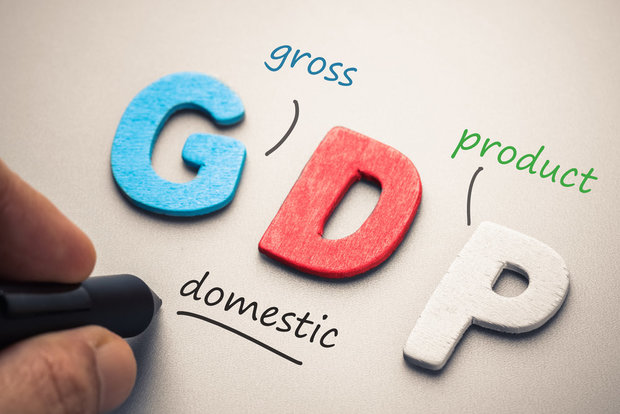The economic success story, some argue, is directly linked to the fluctuations in gross domestic product (GDP) growth rate. But some argue against it. So, is GDP the most precise and credible means of measuring growth and advancement of nations and peoples? Or, does it only show the yawning gap between haves and have-nots by contributing to economic inequality?
There is a general perception that GDP rate is the true barometer of the economic prosperity and welfare of society. But, in reality, they are two entirely different things. Even some famed economists claim that GDP can be misleading as it fails to show the bigger picture of the economic state of a country and fails to differentiate between ‘good’ and ‘bad’ growth – whether everyone has contributed to the economy or only a handful of rich people. Economic inequality generally is driven by unequal ownership of capital that can be either privately or publically owned.
The consistent and alarming rise in income inequality – whether in the United States, India, Russia, China or other developed/developing countries – threatens to make economic growth less robust and durable. Although the economic growth is necessary for economic development, it does not necessarily address all the issues. The GDP metric could be a good indicator of an economy where everyone shares equal benefits and opportunities for economic progress.
Oxfam survey last year revealed that at least one billionaire was born every two days worldwide. Now, there are 2,043 billionaires (dollars) in total. The wealth of this elite group jumped by $762 billion in just over 12 months and Oxfam estimated that almost two-third of that wealth is the product of inheritance, monopoly and cronyism. On the other side, the poor keep getting poorer. The bottom half of the global population made less than one percent of total wealth in 2016-2017, and has seen no substantial increase in their wealth, which exposes faultiness in the global economic order. Also, 82 percent of the global wealth generated in 2017 went to the pockets of just 1 percent of the world population.
Oxfam recommend serious action to tackle growing income inequality between rich and poor as 42 people hold as much wealth as 3.7 billion people who make the poorest half of the world. In this modern, free-market era, especially in the United States, majority of wealth is earned through speculation, rise and fall of stocks – which help in making people rich – where it does widen the gap of inequality though. However, this accumulated money doesn’t help in the real economic expansion.
Inequality varies greatly worldwide. In 2016, the share of total income accounted for world’s top 10% earners (top 10% income share) was 37% in Europe, 41% in China, 46% in Russia, 47% in U.S.-Canada, and around 55% in sub-Saharan Africa, Brazil, and India. In the Middle East, where inequality in deep-rooted, according to rough estimates, the top 10% people held 61% of income, as stated in the World Inequality report.
The world has been changing dramatically, in terms of technological progress and economic growth, but the life of underprivileged, low-income people has become a disaster across the world. Inequality has increased rapidly in the United State, China, Russia and India.
That Americans have political anxiety and are worried about the future of their nation and current social divisiveness prevailing in the country was confirmed to us in December last year by American Psychological Association’s 11th Stress in America Survey.
Unsurprisingly, the income inequality in the United States of America is highest in the Western countries; inequality operating throughout the country. “About 40 million live in poverty, 18.5 million in extreme poverty, and 5.3 million live in Third World conditions of absolute poverty,” United Nations Special Rapporteur on extreme poverty and human rights, in his recently-released report. “Around 40 million continue to live in poverty. 40 million people! That’s almost like the population of France. That’s a lot. Or it’s like 7 Irelands!” according to the report.
Furthermore, the share of top 1 percent population of the United States holds almost 39 percent of the total wealth and has increased over the time. But, the share of bottom 90 percent has fallen. The youth poverty rate has also skyrocketed. In addition, a high infant mortality rate shows the real picture of the worst health care of the people.
Likewise, the success story of China’s economic growth has been celebrated for decades but the level of inequality there is also growing, according to some economists, is approaching the U.S. level of inequality. Also, the Indian economy expanded 7.7 percent year-on-year in the first three months of 2018-strongest growth rate, leaving China behind, where manufacturing and investments increased at a faster pace. However, the widening inequality is catastrophic. India's top 1% of the population now hold 73% of wealth while 67 crore citizens, comprising the country's poorest half, saw their wealth rise by just 1%, according to the Oxfam report.
India has been ranked 100 out of 119 developing countries by the International Food Policy Research Institute’s Global Hunger Index 2017 (GHI), underlining the seriousness of the prevailing hunger situation in India, followed by Pakistan ranked 106. Even countries like Nepal, Sri Lanka, and Bangladesh have been ranked higher than India.
It is pertinent to note here that the billionaire boom is not necessarily a sign of blooming economy but can also be a symptom of the crippled, dysfunctional economic system. Those who work hard can barely finance their children’s education, cannot afford health care and hardly manage two times meal.
So, if the growing inequality is not properly checked and addressed, it may lead to numerous political, economic and social catastrophes. Ultimately, to measure true progress, other human development indexes like education, healthcare or socio-economic progress should be used to measure the well-being of the people, rather than just focusing on one metric like GDP growth.
MNA/TT
